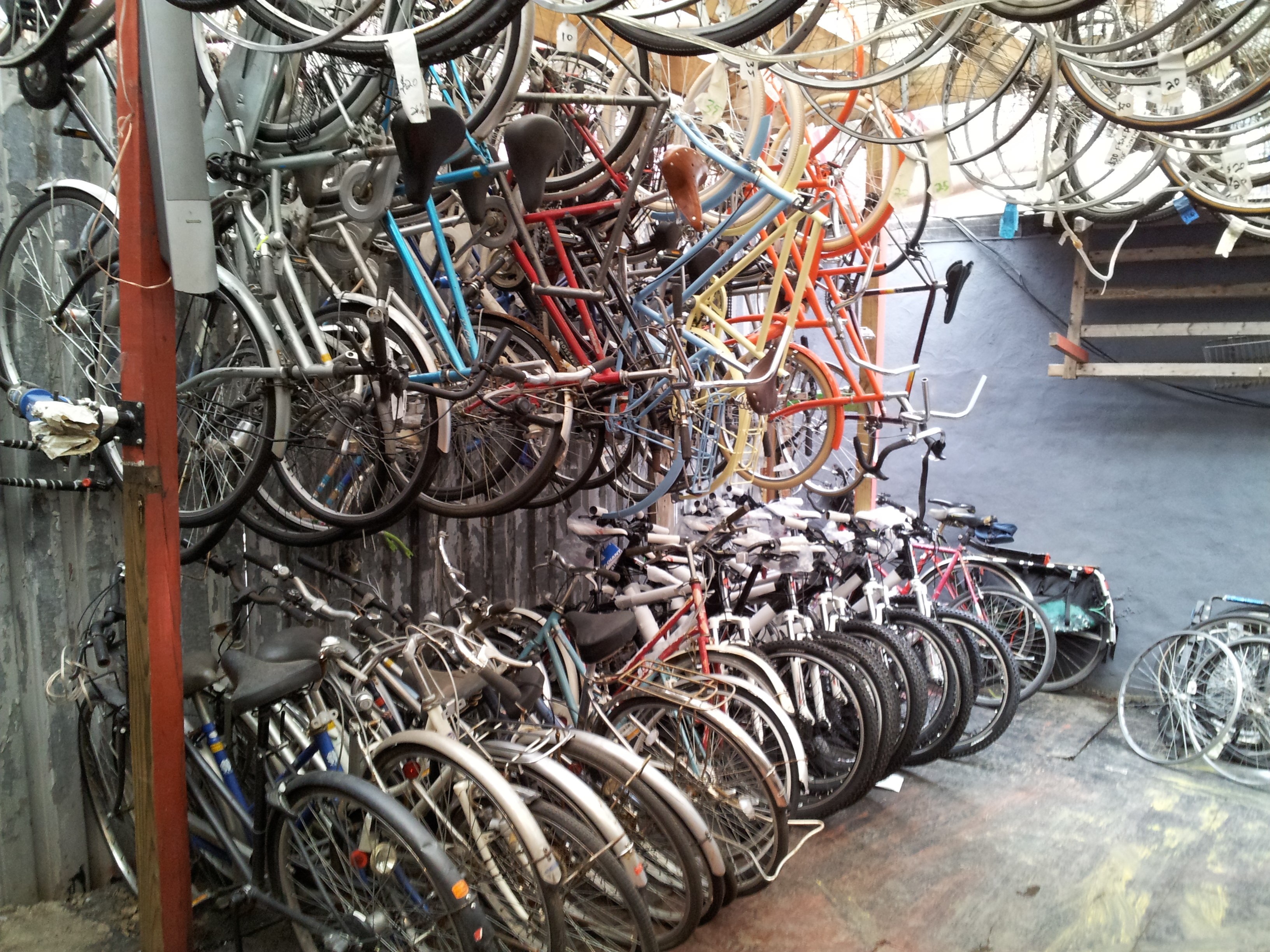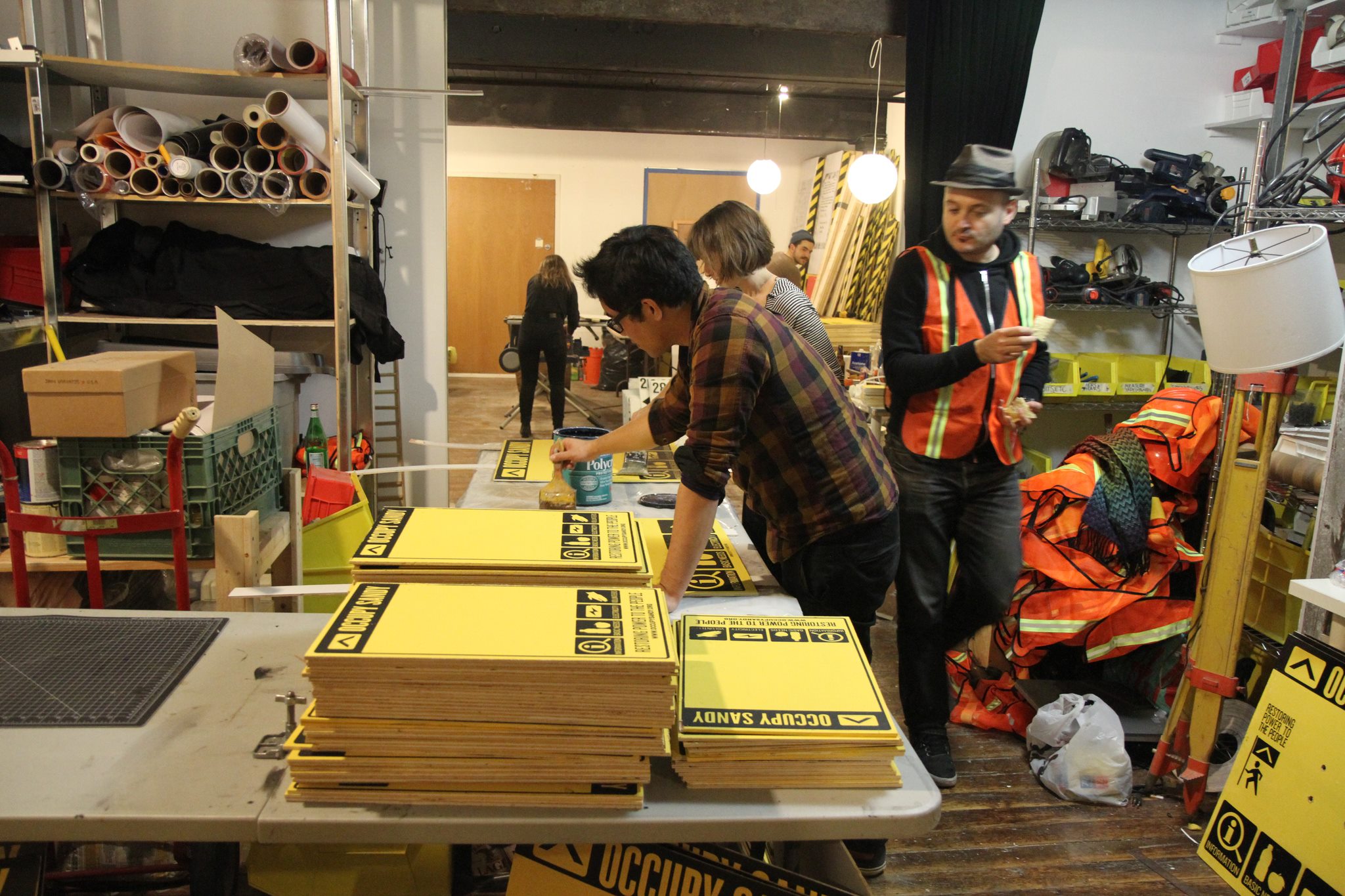gemini & scorpio loft
neighborhood: gowanus | space type: art & events | active since: 2011 | links: website, facebook, twitter, flickr
For ten years, Gemini & Scorpio have been throwing huge, immersive themed parties, consistently positioning themselves at the forefront of the NYC underground art-party world. Along with a few other beautifully creative affairs—Rubulad, Dances of Vice, Shanghai Mermaid, Cheryl, various Winkel + Balktick shindigs—Gemini & Scorpio curate the most creative, daring, and over-the-top events that Brooklyn has to offer. Whether it’s jazz bands in a Russian banya, a steampunk Burning Man fundraiser, an old-meets-new electro-swing dance party at Lincoln Center, or a New Year’s Eve glitter explosion, Gemini & Scorpio bring together dancers, music, and performers around lavish themes to create unforgettable occasions, party after party after party. And that’s not all: G&S also curate a weekly events listing that is second only to NonsenseNYC for finding the most fantastic things to do any day of the week. Sign up here!
After years of being nomadic, Miss Scorpio found a permanent home for G&S in a repurposed Gowanus woodshop. Now, in addition to lavish monthly parties, the loft hosts lectures, dance classes, plays, photo and video shoots, and more. And after spending months on demolition and build-out of the new space, Miss Scorpio reached out to the community she has provided with so many fantastic experiences to ask for help with the next stage of development of her space—and successfully raised more than $32k through Kickstarter. In the short term, this will mean new floors, walls, and ceiling for the loft, and in the long term it will allow G&S to keep bringing us all the best, most magical affairs—the uniquely beautiful experiences that make Brooklyn the most spectacular place to be.
brooklyn spaces: Let’s start before this space: tell me how you became one of New York’s most creative party mavens.
Miss Scorpio: It was a pure accident that started with a website about online dating. This was ten years ago, when online dating was mostly considered weird and sad, but Miss Gemini and I wanted to show people that it was actually this fabulous thing, like eBay for dating. We thought you should never just do dinner and a movie with your online date; you should do something interesting, so that even if the date sucked, at least you’d have had a cool night. So every Friday we put out a list of unique things to do with your online date, and then we started throwing “singles parties that don’t suck.” Well, they didn’t suck to such a degree that we couldn’t keep couples out! We started with a Valentine’s Day party, then we did one for Halloween, and another one for New Year’s, and now it’s ten years later and this is all I do.
brooklyn spaces: What elements are necessary to make a Gemini & Scorpio party?
Miss Scorpio: First there has to be a theme, something a bit off-beat and unexpected that gives people an excuse to dress up. Live entertainment is another factor that’s really important: there’s generally a whole evening of programming curated to the theme. A G&S party isn’t one you drop into casually on your way to something else; our ideal party guest is one who leaves the house knowing that they’re coming to see us, dresses to the theme, and stays with us for the whole night.
brooklyn spaces: Tell me about some of your favorite parties.
Miss Scorpio: I always enjoy the Lost Circus steampunk party, and also the banya parties, which we’ve been doing since 2006. A fantastic recent party was a sci-fi mashup called Cantina at the End of the Universe. It was a Star Wars Day party—I’ve been wanting to do that party for four years, but I had to wait until May 4th fell on a Saturday. One of the headliners was Big Nazo, this incredible alien monster funk band. They played the Masquerade Macabre Halloween party that I co-produced with Rubulad in 2010, which had one of my favorite moments of any party I’ve ever done. Big Nazo was onstage being joined by the five-piece Raya Brass Band, and I was leading a parade from our other party location, headed up by Extraordinary Rendition, a fifteen-person brass band. Big Nazo and Raya were supposed to be done when we got there but they weren’t, so we had like thirty people onstage jamming, along with these enormous alien monster puppets, and the crowd just lost their shit. It was beautiful. [Video of the madness here.]
brooklyn spaces: Who are some other favorite performers you’ve worked with?
Miss Scorpio: There’s definitely a family of performers that I book again and again. Sxip Shirey is an absolute genius composer and musician, and every time he plays I’m excited to hear it, especially when he performs with the incredible beat-boxer Adam Matta. The Love Show dancers are wonderful, they combine classical dance training with a cabaret attitude and fantastic costumes. Shayfer James is a terrific dark rock musician who deserves a much bigger audience than he’s getting. Sometimes I take on artists as a personal cause, and keep booking them until people realize how incredible they are.
brooklyn spaces: Have you ever had someone get so big that they outgrow your parties?
Miss Scorpio: Yes! After I booked the Hot Sardines for my Lincoln Center Midsummer Night’s Swing two years ago, their career has exploded and they are now booked constantly. That’s happened with a bunch of circus people I used to book as well. But it’s a good problem to have. I’m very proud of my talented friends.
brooklyn spaces: Okay, let’s talk about this space. How long did you spend looking for it, and what shape was it in when you found it?
Miss Scorpio: Four years of constant searching, and in the end it was a random Craigslist find. The moment I walked in, I knew this was it, even though it was completely wrecked. There was plywood over all the windows, the floor was rotted in multiple places, there were strange pipes everywhere, the ceiling was half rotted out, there were signs of a recent fire. It was terrible.
brooklyn spaces: How long did it take you to get it into shape?
Miss Scorpio: First there were two months of just demolition. Everything you see, all the walls, we did it all. We re-laid much of the floor, using wood repurposed from other parts of the space. Once we got bathrooms up—with walls—I knew I was ready to let people in. The first party we did here was Swing House, one of my 1920s remix parties. Everybody loved it, but it was a party in a construction zone.
brooklyn spaces: Tell me about some of the non-party events you’ve had here.
Miss Scorpio: We’ve hosted a few lectures in conjunction with Observatory that have been great fun. We had one called “How to Trespass” with Wanderlust Projects, and another with my boyfriend, lexicographer Jesse Sheidlower, called “Sex in Dictionaries.” We just had a storytelling event, “I’m Tawkin’ Here,” which was all New Yorkers and New York stories. Brooklyn Swings does a weekly swing-dancing class. We hosted an immersive, participatory version of Midsummer Night’s Dream staged by Shakespeare Shakedown. I’m always looking for people who are doing innovative, interesting things and could benefit from having access to an affordable art space.
brooklyn spaces: What’s your relationship like within the rest of the underground arts community? I feel like, of everyone I’ve interviewed, you really know every single person in the creative class in Brooklyn.
Miss Scorpio: It’s an extremely tight-knit community. It’s not just me; I think we all know each other. But because I do the event listings, I have a good sense of what everyone is up to. Even if I don’t know someone personally, I can tell you what arc their work has taken over the last ten years.
brooklyn spaces: Last year when you and I were doing Occupy Sandy volunteering together, you told me you once did the listings on your phone from Paris.
Miss Scorpio: Oh yeah. Another time I did them from a tethered connection in an RV on the way to Burning Man. Everywhere I’ve traveled, I’ve brought the listings with me. I consider it my community service, a way for me to give back to the people who trust me and honor me with their presence at my events.
brooklyn spaces: What advice would you give someone who wanted to do what you do?
Miss Scorpio: I’d say definitely don’t get into it for the glamour! Ninety percent of what I do is spreadsheets and emails. Maybe by 11 or 12 on a party night I’ll finally get to get into costume and have a few hours of fun, but for the most part it’s a job like any other. For me the payoff is conceiving something and then seeing it become a reality.
brooklyn spaces: What are your plans for the future—ten more years of this?
Miss Scorpio: Oh gosh, I don’t know. It does seem like I’m pretty committed to the New York cultural underground, but I couldn’t tell you what will happen in my life in the next ten years. I hope it’s big and exciting.
***
Like this? Read about more underground nightlife: Rubulad, the Lab, Red Lotus Room, Newsonic, House of Yes, Gowanus Ballroom, 12-turn-13






































